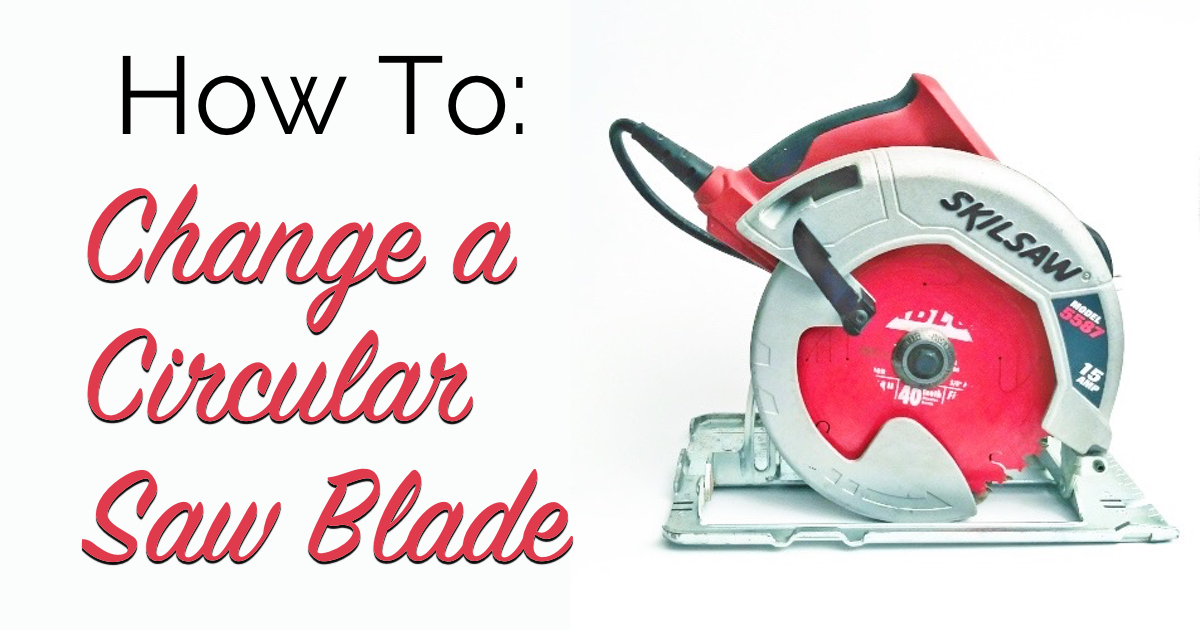Can you change a circular saw blade on a Craftsman saw? Yes, you can! This guide provides easy-to-follow instructions for Craftsman circular saw blade replacement. Changing the blade is a key part of Craftsman circular saw maintenance, and it’s a straightforward process once you know the steps. Here’s everything you need to know about changing a blade on a Craftsman saw.

Image Source: thecraftsmanblog.com
Why Change Your Circular Saw Blade?
A dull or damaged blade is not just inefficient; it’s dangerous. Here’s why regular Craftsman circular saw blade change is important:
- Safety: Dull blades require more force, increasing the risk of kickback.
- Quality of Cut: A sharp blade delivers clean, precise cuts.
- Efficiency: A fresh blade cuts faster and with less effort.
- Tool Longevity: Using a dull blade puts unnecessary strain on your saw’s motor.
Tools and Materials Needed for Craftsman Circular Saw Blade Replacement
Before starting your Craftsman circular saw blade removal, gather these essential items:
- New Circular Saw Blade: Choose the right size and type for your saw and material.
- Craftsman Circular Saw Blade Wrench: Typically included with your saw. If lost, a correctly sized wrench is crucial.
- Gloves: Protect your hands from sharp edges.
- Safety Glasses: Shield your eyes from debris.
- Block of Wood: To secure the blade while loosening the arbor nut.
Step-by-Step Craftsman Circular Saw Blade Change Instructions
Follow these detailed steps for a safe and effective Craftsman circular saw blade installation.
Step 1: Unplug the Saw
Safety first! Always disconnect the power cord from the outlet before performing any maintenance. This prevents accidental start-ups.
Step 2: Locate the Arbor Lock
The arbor lock is a button or lever that prevents the blade from rotating. It’s usually located near the blade.
Step 3: Engage the Arbor Lock
Press and hold the arbor lock. You might need to rotate the blade slightly until the lock engages fully. You’ll feel or hear it click into place.
Step 4: Loosen the Arbor Nut
- Direction Matters: The arbor nut is usually reverse-threaded. This means you’ll turn it clockwise to loosen it. Check your Craftsman blade change instructions for confirmation, but most are reverse-threaded.
- Using the Wrench: Place the Craftsman circular saw blade wrench on the arbor nut. Apply firm, steady pressure.
- Wood Block for Stability: If the blade spins even with the arbor lock engaged, wedge a block of wood against the blade to prevent movement.
- Be Patient: It may require some force to loosen the nut, especially if it hasn’t been removed in a while.
Step 5: Remove the Arbor Nut, Washer and Outer Flange
Once the nut is loose, fully unscrew it. Carefully remove the nut, the outer flange, and any washers. Keep these parts in a safe place. Take note of the order they were removed; you’ll need to reassemble them in the same way.
Step 6: Remove the Old Blade
Gently slide the old blade off the arbor. Be careful of the sharp teeth. Dispose of the old blade responsibly. Wrap it securely in cardboard or heavy paper to prevent injuries.
Step 7: Clean the Flanges
Before installing the new blade, inspect and clean the inner and outer flanges. Remove any dirt, sawdust, or debris. This ensures a flush, secure fit for the new blade.
Step 8: Install the New Blade
- Direction: Ensure the blade is facing the correct direction. Look for an arrow on the blade indicating the rotation direction. The arrow should match the saw’s rotation.
- Positioning: Slide the new blade onto the arbor, making sure it sits flush against the inner flange.
Step 9: Reassemble the Components
Replace the outer flange, washer (if applicable), and arbor nut in the correct order. Tighten the arbor nut securely with the wrench.
Step 10: Disengage the Arbor Lock
Release the arbor lock button or lever.
Step 11: Test the Blade
Plug the saw back in and briefly test it to ensure the blade spins freely and doesn’t wobble.
Step 12: Final Checks
- Make sure the blade guard moves freely and returns to its position.
- Double-check that all screws and fasteners are tight.
Craftsman Circular Saw Maintenance: Beyond Blade Changes
Replacing the blade is just one part of keeping your Craftsman circular saw in top condition. Consider these additional maintenance tips:
- Regular Cleaning: Remove sawdust and debris after each use. Use a brush or compressed air.
- Inspect the Cord: Check for damage to the power cord and replace if necessary.
- Lubricate Moving Parts: Occasionally lubricate moving parts, such as the blade guard pivot point. Use a dry lubricant to avoid attracting dust.
- Check Brushes (if applicable): Some Craftsman circular saws have replaceable motor brushes. Check these periodically and replace them when worn.
- Store Properly: Store your saw in a dry, protected location.
Troubleshooting
| Problem | Possible Cause | Solution |
|---|---|---|
| Blade Won’t Loosen | Arbor nut is too tight | Use a longer wrench for more leverage. |
| Blade Wobbles | Incorrect blade installation or damaged flange | Reinstall the blade carefully. Check the flanges for damage. Replace if needed. |
| Arbor Lock Doesn’t Engage | Debris blocking the mechanism | Clean the area around the arbor lock. |
| New Blade Cuts Poorly | Incorrect blade type for the material | Select a blade designed for the material you are cutting. |
| Saw Overheats | Dull blade or excessive force | Replace the blade. Allow the saw to cool down. |
Choosing the Right Circular Saw Blade
Selecting the correct blade is crucial for achieving the best results. Consider the following factors:
- Blade Diameter: Match the blade diameter to your saw’s specifications. Using the wrong size can be dangerous.
- Arbor Size: Ensure the blade’s arbor hole matches the saw’s arbor size.
- Tooth Count: Higher tooth counts produce smoother cuts but cut slower. Lower tooth counts are faster but leave a rougher edge.
- Tooth Material:
- High-Speed Steel (HSS): Suitable for wood and some soft metals.
- Carbide-Tipped: More durable and can cut through harder materials, including hardwoods, plywood, and some non-ferrous metals.
- Diamond-Tipped: Used for cutting abrasive materials like tile, concrete, and masonry.
- Kerf: The kerf is the width of the cut the blade makes. Thin-kerf blades require less power and produce less waste.
- Blade Type:
- General Purpose: Suitable for a variety of woodcutting tasks.
- Ripping: Designed for cutting with the grain of the wood.
- Crosscutting: Designed for cutting against the grain of the wood.
- Plywood: Specifically designed for cutting plywood without splintering.
- Metal Cutting: For cutting ferrous and non-ferrous metals.
Table: Blade Selection Guide
| Material | Blade Type | Tooth Count | Tooth Material |
|---|---|---|---|
| Soft Wood | General Purpose | 40-60 | HSS |
| Hard Wood | Crosscutting | 60-80 | Carbide |
| Plywood | Plywood | 60-80 | Carbide |
| Aluminum | Metal Cutting | 60-80 | Carbide |
| Steel | Metal Cutting | 80+ | Carbide |
Safety Precautions
- Always wear safety glasses and gloves when handling circular saw blades.
- Never operate a saw with a damaged blade guard.
- Keep your hands clear of the blade path.
- Use a push stick when cutting small pieces of wood.
- Be aware of the risk of kickback and take steps to prevent it.
- Never force the saw. Let the blade do the work.
- If you are unsure about any aspect of changing the blade, consult the saw’s manual or seek assistance from a qualified professional.
Fathoming Arbor Nut Thread Direction
The direction in which you loosen or tighten the arbor nut is crucial. Most Craftsman circular saws feature a reverse-threaded arbor nut. This means:
- To Loosen: Turn the nut clockwise.
- To Tighten: Turn the nut counter-clockwise.
However, it is always best to consult your saw’s manual or look for markings on the saw itself to confirm the thread direction. Trying to force the nut in the wrong direction can damage the threads.
Disposing of Old Blades
Used circular saw blades can be dangerous if not disposed of properly. Follow these guidelines:
- Wrap the Blade: Wrap the old blade in several layers of cardboard or heavy paper. Secure the wrapping with tape to prevent the blade from accidentally cutting someone.
- Mark the Package: Clearly mark the package as “Sharp Object” to warn others.
- Disposal Options:
- Recycling: Check with local recycling centers to see if they accept used saw blades.
- Metal Scrap Yard: Metal scrap yards may accept used blades for recycling.
- Household Waste: If recycling is not an option, dispose of the wrapped blade in your regular trash.
When to Replace Your Circular Saw Blade
- Dullness: If the blade struggles to cut through the material or leaves a rough edge, it’s likely dull.
- Damage: Inspect the blade for missing teeth, cracks, or bends. Any of these indicate the need for replacement.
- Burning: If the blade overheats and burns the wood, it may be dull or the wrong type for the material.
- Increased Effort: If you have to apply more force than usual to make a cut, the blade is likely dull.
- Vibration: Excessive vibration during cutting can be a sign of a damaged or unbalanced blade.
FAQ: Craftsman Circular Saw Blade Replacement
Q: What is the correct way to tighten the arbor nut?
A: Generally, you should tighten the arbor nut firmly by hand using the Craftsman circular saw blade wrench, but avoid over-tightening. Overtightening can damage the threads. Engage the arbor lock while tightening.
Q: Can I use any circular saw blade with my Craftsman saw?
A: No. You must use a blade with the correct diameter and arbor size for your specific Craftsman saw model. Check your saw’s manual for the correct specifications.
Q: What do I do if I lost my Craftsman circular saw blade wrench?
A: You can purchase a replacement wrench at most hardware stores or online. Ensure the wrench is the correct size for your saw’s arbor nut. The size is usually indicated in the saw’s manual.
Q: How often should I change my circular saw blade?
A: The frequency depends on how often you use the saw and the materials you cut. Inspect the blade regularly and replace it when it becomes dull or damaged.
Q: Can I sharpen my circular saw blade?
A: Yes, you can sharpen some circular saw blades, particularly those with carbide-tipped teeth. However, it requires specialized tools and skills. It may be more cost-effective to replace the blade, especially for HSS blades.
Q: What causes kickback?
A: Kickback is usually caused by a dull blade, improper cutting technique, or binding of the blade in the material. Always use a sharp blade, support the workpiece properly, and avoid forcing the saw.
By following these Craftsman blade change instructions and practicing proper Craftsman circular saw maintenance, you can keep your saw running smoothly and safely for years to come.

Hi, I’m Tom Scalisi, and welcome to The Saw Blog! I started this blog to share my hands-on experience and insights about woodworking tools—especially saws and saw blades. Over the years, I’ve had the chance to work with a wide range of tools, and I’m here to help both professionals and hobbyists make informed decisions when it comes to selecting and using their equipment. Whether you’re looking for in-depth reviews, tips, or just advice on how to get the best performance out of your tools, you’ll find it here. I’m excited to be part of your woodworking journey!
